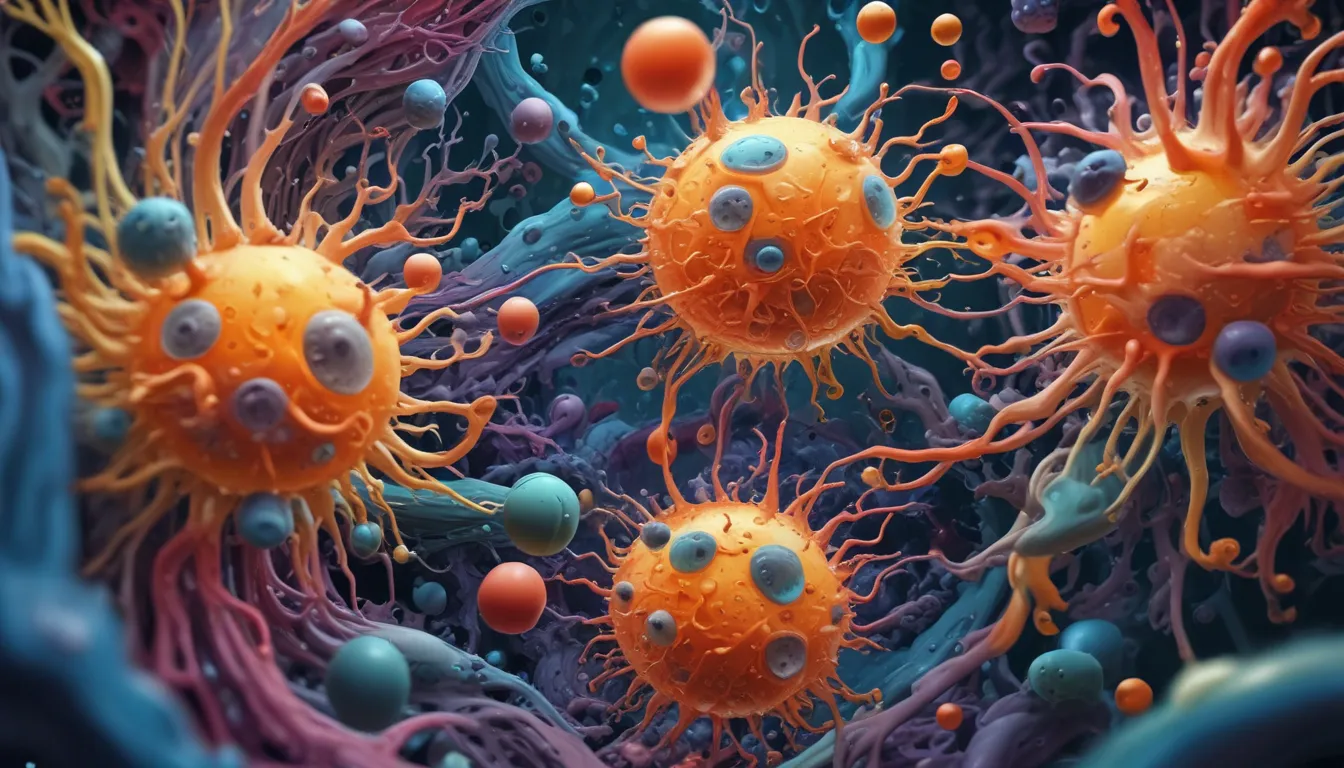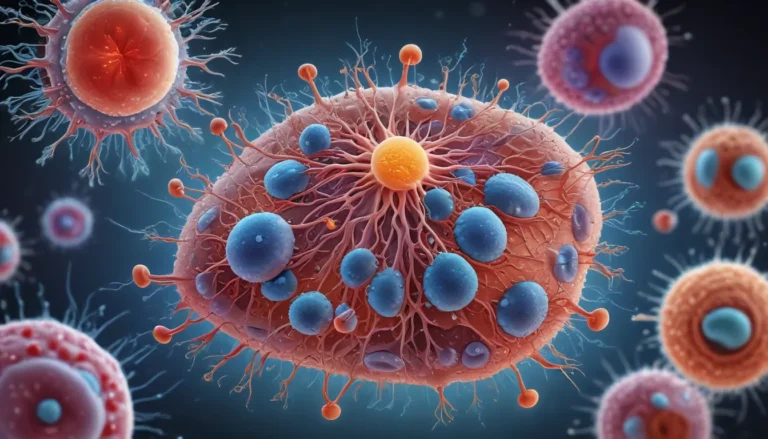A Note About Images: The images used in our articles are for illustration purposes only and may not exactly match the content. They are meant to engage readers, but the text should be relied upon for accurate information.
In the vast world of biology, there is a captivating topic that never fails to pique the interest of scientists and researchers – cell motility. The ability of cells to move is a fundamental process that plays a vital role in various biological phenomena, such as organ development, immune response, wound healing, and even cancer metastasis.
Let’s embark on a journey into the fascinating realm of cell motility and uncover 10 intriguing facts that illuminate this remarkable subject. From the intricate machinery involved in cell movement to the diverse types of motility displayed by various cell types, prepare to be astonished by the extraordinary complexity and versatility of biological locomotion.
Key Highlights:
- Cells are akin to tiny superheroes that harness their movement powers to heal wounds, construct organs, and combat adversaries. It’s akin to witnessing a real-life action-packed movie unfolding within our bodies! – Just like detectives unravelling a mystery, scientists leverage cutting-edge technology to spy on cells and unveil their secrets. A profound understanding of cell motility has the potential to lead to groundbreaking medical breakthroughs!
Cell Motility: Essential for Wound Healing
When we sustain an injury, the process of wound healing hinges on the migration of cells to the injury site. Through cell motility, these cells can expedite wound closure and facilitate tissue regeneration, ensuring effective healing.
The Significance of Cytoskeletal Structures in Cell Motility
The cytoskeleton, comprising microtubules, microfilaments, and intermediate filaments, serves as a critical component in providing structural support and facilitating cell movement. These dynamic filaments constantly reorganize to propel cell motility forward.
Cell Motility: Pivotal for Embryonic Development
In embryogenesis, cells undergo movement and migration to establish tissue layers and shape intricate structures. Cell motility is instrumental in the formation of organs and organisms, ensuring seamless development.
Diverse Modes of Cell Motility
Cell motility can manifest through various mechanisms, encompassing crawling, swimming, and amoeboid-like movements. Each mode of motility is tailored to meet the specific requirements and surroundings of cells.
Regulation of Cell Motility through Signaling Pathways
Intricate signaling pathways orchestrate cell motility, enabling cells to respond to external cues and communicate with neighboring cells. These pathways involve proteins, enzymes, and receptors to harmonize the movement of cells.
Cell Motility: Imperative for Immune Response
White blood cells, such as neutrophils and macrophages, heavily rely on cell motility to reach the infection or injury site. This movement empowers them to engulf pathogens and instigate the immune response.
Cell Motility’s Role in Cancer Metastasis
Cancer cells acquire the ability to migrate and invade adjacent tissues through altered cell motility, paving the way for metastasis. This phenomenon poses a significant challenge in cancer treatment as it fuels the spread of cancer throughout the body.
Influence of Extracellular Factors on Cell Motility
The extracellular matrix, neighboring cells, and chemical gradients in the environment exert an influence on cell motility. Cells adeptly adapt to these cues by adjusting their movement and directionality accordingly.
Advanced Imaging Techniques to Study Cell Motility
Scientists leverage state-of-the-art imaging technologies like live-cell microscopy and high-resolution microscopy to visualize and explore the exquisite details of cell motility at a microscopic level.
Dynamic Nature of Cell Motility
Cell movement transcends a static event to emerge as a dynamic process characterized by continual changes in cell shape, adhesion, and cytoskeletal rearrangement. This dynamic attribute empowers cells to adapt and respond to their ever-evolving surroundings.
The saga of cell motility represents a captivating domain of exploration that continuously unveils the intricate mechanisms governing cell movement. Unraveling the nuances of how cells navigate their environment not only enriches our understanding of basic biology but also harbors the promise of advancements in diverse fields like tissue engineering, regenerative medicine, and cancer research. The 10 enthralling facts about cell motility disclosed here merely scratch the surface of this enthralling field.
Concluding Insights
Cell motility stands as a captivating and indispensable process within the realm of biology. Through intricate mechanisms and molecular machinery, cells adeptly navigate their environments to execute pivotal functions. From immune cells surveilling our bodies to the orchestration of embryonic development, cell motility emerges as a linchpin in manifold biological processes.
By delving into the underlying mechanisms of cell motility, scientists glean profound insights into disease progression, wound healing, and tissue regeneration. As research forges ahead, novel therapeutic targets may surface to combat the likes of cancer metastasis, neurological disorders, and immune system maladies.
The exploration of cell motility constitutes an active arena of study brimming with uncharted territories awaiting discovery. Nevertheless, the awe-inspiring complexity and adaptability of cells incessantly astound scientists, fueling their quest to unravel the enigmas of cell motility.
FAQs
Q: What constitutes cell motility?
A: Cell motility denotes the ability of cells to move and reposition themselves in response to diverse stimuli or signals.
Q: How do cells navigate their surroundings?
A: Cells undertake varied mechanisms to move, including crawling, swimming, and amoeboid movements. The cytoskeleton, comprising microtubules, microfilaments, and intermediate filaments, drives these movements.
Q: What pivotal role does cell motility play in development?
A: Cell motility proves pivotal in embryonic development, allowing cells to migrate to precise locations and orchestrate the formation of intricate bodily structures and organs.
Q: Can diseases disrupt cell motility?
A: Yes, abnormal cell motility characterizes certain diseases like cancer metastasis. A comprehensive comprehension of the molecular mechanisms underpinning cell motility can pave the way for targeted therapies combating such diseases.
Q: Which factors influence cell motility?
A: Cell motility may be shaped by myriad internal and external factors, including chemical gradients, mechanical cues, genetic mutations, and signaling pathways.
As you delve into the realm of cell motility, brace yourself for a riveting odyssey through the captivating facets of cellular behavior. Embark on a quest to fathom how cells traverse their environment through cell migration or unravel the complexities of cell adhesion that fortify tissues. Do not miss an expedition into the spellbinding universe of the cytoskeleton, the intricate network conferring shape to cells and propelling their movement. Each endeavor promises a trove of mind-boggling facts that will leave you spellbound by the microscopic wonders nestled within our bodies. Get ready to be spellbound as you continue traversing the captivating realm of cellular biology!
Myriad Wonders Await Discovery
As we unravel the mysteries of cell motility, a plethora of riveting wonders awaits discovery. The astounding complexity and ingenuity that underpin cellular behavior serve as a testament to nature’s elegance and ingenuity. Join us on this enthralling expedition as we decipher the secrets of cell motility, unlocking a realm of knowledge brimming with endless possibilities. Trust in our unwavering commitment to delivering peerless and compelling content, driven by a passion for enlightening and engaging audiences worldwide. Let the symphony of cell motility unfold before you, guiding you through a labyrinth of fascination and discovery.






